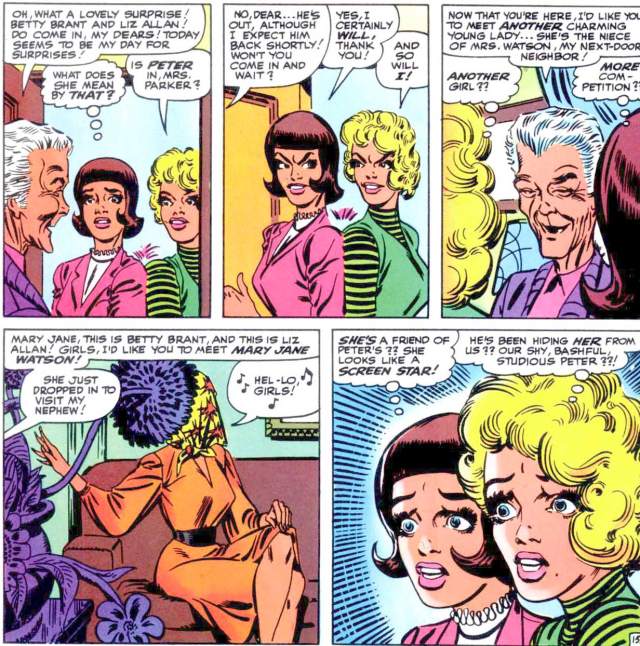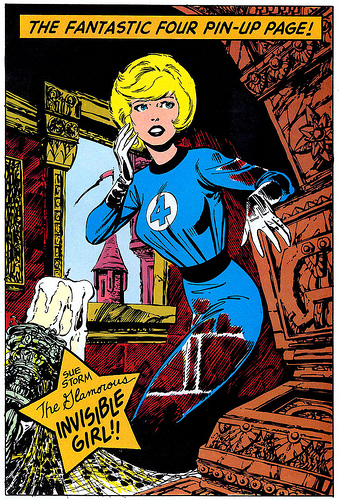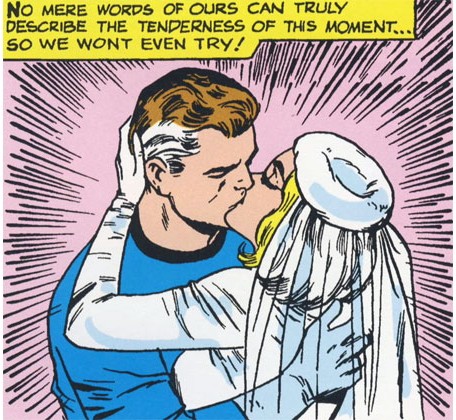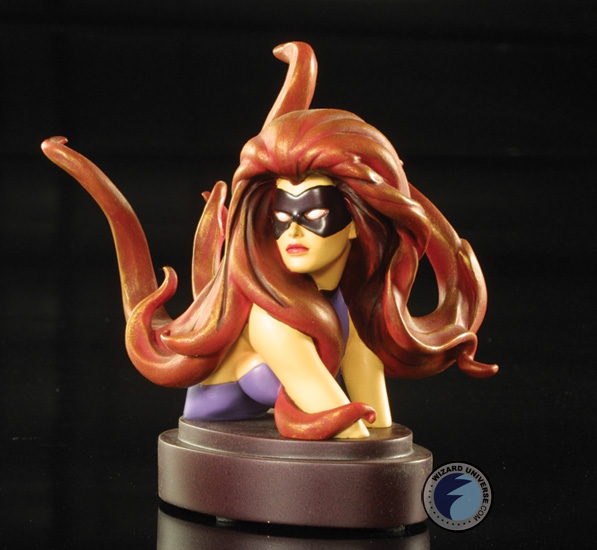It is safe to say that Marvel comics in the 1960s had a clear vision. And it seems that part of this clear vision included portraying women in a certain light. I say this because all of the female characters within these episodes of Spiderman, Fantastic Four and Hulk that I read through gave a eerily similar portrayals of their female characters. The females, it seems, had only to make a choice. Would they be a good girl, or a bad girl? This singular choice determined their existence.
Let’s begin with the good girls. They all, sad to say, resent men for their heroic ambitions, because heroic amition means less time for them. They also spend copious amounts of time getting in the way and placing themselves in situation where they will need rescue. Yes, from the very men whose heroism they resent, either consciously, Like Doris, girlfriend to Johnny Storm or unconsciously, such as Betty, love interest to Peter Parker. These characters are transparently weak and needy. Neither of them seem to think beyond window shopping and how make their boyfriends jealous. If you want to be a good girl, you have got to submit to societal standards which include these less than attractive characteristics and you must cultivate an overwhelming desire for men which is so fantastically strong it takes over your entire existence. Am I exaggerating? Hardly.
But I wasn’t terribly surprised to see the way in which the young females were portrayed in Spiderman and I wasn’t surprised that the Torch’s girlfriend was painted as a controlling over dramatic nuisance either. Frankly I am getting used to the female love interests playing the role of distraction, motivation, victim, but little else.
But Susan Storm was a surprise to me, and a disappointment.
Even her super name, Invisible Girl, carries connotations of weakness and portrays her as a lesser caliber super hero than her male counterparts. She is no Human Torch or Mr. Fantastic, she is but a girl, not even a woman, and her claim to fame is her ability to disappear. She is by far the weakest member of her super group. She is often there simply because her love interest, Reed Richards, is and she cannot bear to be separated from him. In fact, this need to tag along is how she became a super hero in the first place, according to the Fantastic Four origin story. “My boyfriend is going on a dangereous mission to space? Well them, by golly, I am too!” Or something to that effect.
Which brings up the next point, she is also the weakest in terms of emotional vulnerability. She is obsessed with marrying Reed, AKA Mr. Fantastic, and is constantly clinging to her “darling,” mooning and fawning over him like a love-struck adolescent. I suppose calling her “girl” is accurate after all. And even after they are married, she is more concerned with being able to go on her honeymoon than she is with the safety and well being of humanity. What kind of super hero is she?
Sadly, the only strong females portrayed in the 60s Spiderman and Fantastic Four comics were those that played the role of villains. And these women were depicted as conniving, evil temptresses who used their attractiveness and sexuality to “play” the men in their worlds, villains and superheroes alike. These women were bad girls, of course, but they were also often depicted as being the masterminds amongst their criminal cohorts, even though the ofish male villains were not always aware that they were under the influence. These women were calling the shots and using their brains.
So what is the message of these early Marvel volumes? To be a good girl is to be weak, pathetic and needy, not to mention completely obsessed by the opposite sex? And conversely, is the alternative to good = weak simply strong = bad? Women are not so one dimensional, Marvel! But if I had to chose, I’d much rather be a madam medusa than an invisible girl. It just seems like the former had a little more control over her own destiny. And a really spectacular power to boot.





Madam Medusa was a really neat villainess. She should have stayed with the Frightful Four and married the Wizard. Hopefully she will return to the evil F.F. someday in the near future and beat Susan Storm once again.